
The Oregon Army National Guard is a federally mandated and equipped military organization under the civilian direction of the Oregon Military Department, with the Governor of Oregon as its Commander-in-Chief. It responds to state and national emergencies, military conflicts and natural disasters, and conducts search and rescue operations. While the history of the militia dates back to the establishment of the first Oregon militia in 1843, the present Guard was not established until after 1903. The modern Guard includes citizen soldiers, and its motto is "When we are needed, we are there."

The Georgia Army National Guard is the Army National Guard component of the Georgia National Guard, administratively part of the Georgia Department of Defense. It consists of more than 11,100 citizen-soldiers training in more than 79 hometown armories and regional facilities across the state. Georgia’s Army Guard is the sixth largest in the nation and includes combat, combat support and combat service support units.

The South Carolina Army National Guard is a component of the United States Army and the United States National Guard. Nationwide, the Army National Guard comprises approximately one half of the U.S. Army's available combat forces and approximately one third of its support organization. National coordination of various state National Guard units is maintained through the National Guard Bureau.
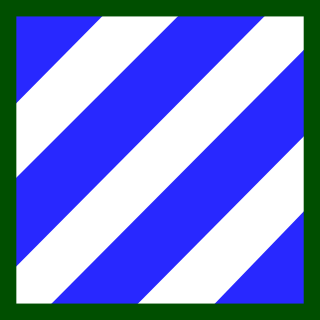
The 48th Infantry Brigade Combat Team is a modular infantry brigade of the Georgia Army National Guard. One of the oldest units in U.S. Army history, the lineage of the 48th Infantry Brigade can be traced back to 1825. It is one of few units in the US military that also saw service as a unit of the Confederate States of America during the American Civil War. Today, the 48th IBCT is part of the U.S. Army's "Associated Units" program where it's aligned under the 3rd Infantry Division, a combined arms combat maneuver unit of the Regular Army.
The 120th Infantry Regiment is an infantry regiment of the United States Army National Guard.

The 38th Sustainment Brigade is a sustainment brigade of the United States Army National Guard in Indiana.
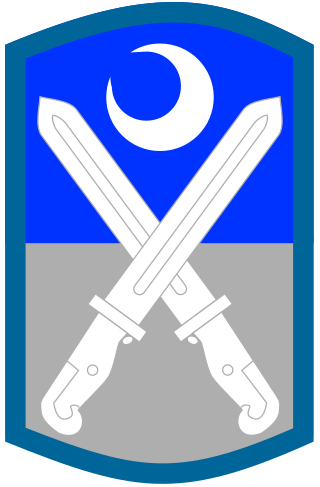
The 218th Maneuver Enhancement Brigade is a rear area support brigade of the South Carolina Army National Guard, headquartered at Charleston. It derives its history from the previous 218th Infantry Brigade (Mechanized) (Separate), originally formed from the 2nd Brigade of the former 30th Infantry Division on 1 January 1974. On 1 September 2008, the Headquarters and Headquarters Detachment of the 105th Signal Battalion became the Headquarters and Headquarters Company (HHC) of the 218th MEB. On 1 March 2009, the HHC of the 218th Infantry Brigade was consolidated with the HHC of the 218th MEB, becoming the 218th MEB.

The 156th Infantry Regiment is an infantry regiment in the United States Army and the Louisiana National Guard. It began as a Confederate Army unit in 1861, and surrendered to the Union at the Battle of Appomattox Court House in 1865. It was reformed in 1878 as a militia unit, and reorganized into the Louisiana National Guard in 1899. It saw support service in World War I. In world War II it served as a guard battalion in Europe, for which it added a lion to its coat of arms to symbolize its service in northern France. It deployed twice during the Iraq war.

The 168th Infantry Regiment is an infantry regiment of the United States Army. The 1st Battalion of the 168th Infantry is part of the 2nd Infantry Brigade Combat Team, 34th Infantry Division, part of the Iowa National Guard.

The 107th Cavalry Regiment, Ohio Army National Guard, is a parent regiment under the U.S. Army Regimental System, with headquarters at Hamilton, Ohio. It currently consists of the 2nd Squadron, 107th Cavalry Regiment, part of the 37th Infantry Brigade Combat Team (BUCKEYE), Ohio National Guard located throughout southwest Ohio.
The 152nd Infantry Regiment was an infantry regiment in the Indiana Army National Guard, part of the 76th Infantry Brigade Combat Team.

The Chatham Artillery is an artillery unit that has played a leading role in the history of the state of Georgia since the American Revolution. In 1776, Thomas Lee was authorized to enlist a provincial company of artillery for the defense of Savannah, the first such unit in Georgia's history. Commanded by Joseph Woodruff, they defended the right flank of American forces when the British attacked Savannah. They saw service in the Oconnee wars, The Embargo Wars, and The War of 1812. They were part of the force that occupied Fort Pulaski that opened the American Civil War, and served in and around Savannah and Charleston South Carolina before joining General Johnston's forces in Columbia, South Carolina. After the reorganization in 1872, they mustered out to the border with Mexico, to stop Pancho Villa's raids in the United States. They served with the "Dixie Division" in France during World War I, and landed on Normandy Beach on D-day plus 4 in World War II. They breached the Siegfried Line, and were at the Elbe River when the war ended. In 2005 they were mobilized again into federal service, as an element of the 48th Brigade Combat team serving in Iraq, part of Operation Iraqi Freedom. The Chatham Artillery was re-mobilized in 2009 to support Operation Enduring Freedom in Afghanistan, personally training Afghan Troops and Police Forces. They were demobilized in 2010 at Fort Stewart, Georgia. Today they remain in service, as a modular artillery brigade of the Georgia Army National Guard, the 118th Field Artillery.
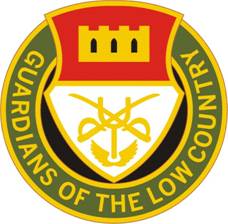
Troop B, 202nd Cavalry was the armored cavalry reconnaissance troop of the 218th Infantry Brigade of the South Carolina Army National Guard from 1991 to 2008. It was redesignated from Troop B, 713th Cavalry, which served in the same role from 1973. Troop B, 713th Cavalry was the only unit assigned to the 713th Cavalry parent regiment under the Combat Arms Regimental System, which carried over to the replacement United States Army Regimental System, and Troop B, 202nd Cavalry was likewise the only unit assigned to the 202nd Cavalry parent regiment under the latter.
The 748th Cavalry Regiment was a United States Army cavalry regiment, represented in the Georgia Army National Guard by 1st Squadron, 748th Cavalry, headquartered at Griffin, Georgia, part of the 48th Armored Division. It was broken up in 1968 when the division was inactivated.
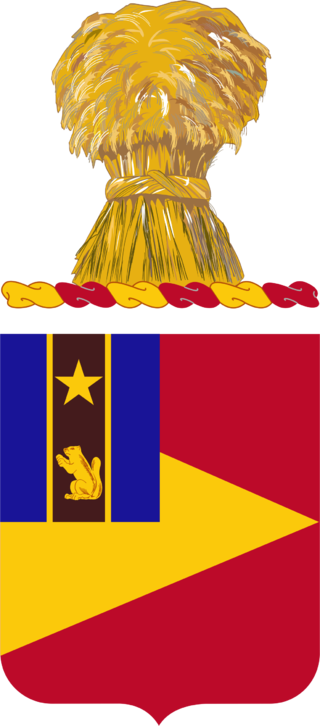
The 94th Cavalry Regiment is a United States Army cavalry regiment, represented in the Minnesota Army National Guard by 1st Squadron, 94th Cavalry, part of the 1st Armored Brigade Combat Team, 34th Infantry Division, stationed at Duluth.
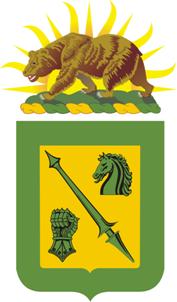
The 111th Armored Cavalry Regiment was a light armored cavalry regiment that was part of the California Army National Guard, briefly active during the early years of the Cold War.

The 51st Military Police Battalion is a military police battalion of the South Carolina Army National Guard. The battalion headquarters is in Florence, South Carolina with subordinate units in West Columbia and Timmonsville.















